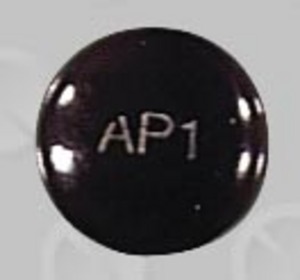If your doctor has diagnosed you with a urinary tract infection, he may have prescribed you. Phenazopyridine Hydrochloride. If Phenazopyridine Hydrochloride is a medicine you are taking, or considering asking about, this literature will prove to be beneficial to you. It will make you more aware of the effects that Phenazopyridine Hydrochloride has on your body, and perhaps put your mind concerning the usage of Phenazopyridine Hydrochloride.
Phenazopyridine Hydrochloride’s original brand name is Pyridium. The dosage form comes in tablet form. The tablets resemble shiny brown M&M;’s. The tablets for Phenazopyridine Hydrochloride come in 100 milligrams, and well as a 200 milligram form. Phenazopyridine Hydrochloride is also available as a non-prescription medication, and in that case, it is only 95 milligrams.
Phenazopyridine Hydrochloride is used for the relief of pain, burning, urgency, frequency and other discomforts that stem from irritation of the lower urinary tract mucosa. Urinary tract infections could be caused by poor hygiene, infection, trauma, surgery, endoscopic procedures, or by the passage of sounds or catheters.
Two hundred milligrams of Phenazopyridine Hydrochloride is taken three times a day after meals. Phenazopyridine Hydrochloride should not be used for more than two days when used with an antibacterial agent for the treatment of a urinary tract infection. Phenazopyridine Hydrochloride may be taken with food or milk in the case that stomach upset occurs.
Phenazopyridine Hydrochloride is excreted in the urine where it exerts a topical analgesic effect on the urinary tract mucosa. Phenazopyridine Hydrochloride is not meant to treat the underlying cause for the urinary tract infections. Its object is just to assuage the effects caused by the urinary tract infection. Patients who have renal insufficiency and/or patients who are overly sensitive to Phenazopyridine should not use Phenazopyridine Hydrochloride. Use of Phenazopyridine Hydrochloride should be discontinued if you notice that your skin becomes a yellowish color. IF this happens, that means that your kidneys are not processing the Phenazopyridine Hydrochloride correctly. If you are older, your kidneys may not be as active and functional as they were when you were younger, and in that case, Phenazopyridine Hydrochloride may not be right for you.
Patients using Phenazopyridine Hydrochloride may experience headache, rash, orange or red urine, and stomach disturbances. Keep in mind that since Phenazopyridine Hydrochloride does make urine a red/orange color, it may stain clothing and fabric. Staining of contacts lenses has also been reported. It’s important to store Phenazopyridine Hydrochloride in a cool, dry place away from children and sunlight to help preserve its potency.
If you miss a dose of Phenazopyridine Hydrochloride, take it as soon as your remember. If it’s closer to the time of your next dose, skip the missed dose and return to your normal dosing schedule as soon as possible.
If you take Phenazopyridine Hydrochloride in an excessive amount, you may experience blood disorders, a bluish tinge to the skin, and impaired kidney and liver function. Seek emergency medical treatment immediately if/when this occurs.
With proper use, Phenazopyridine Hydrochloride should assuage your urinary tract infection symptoms. Meanwhile, work with your doctor to find the underlying cause of the infection so that your symptoms may be done away with all together.


